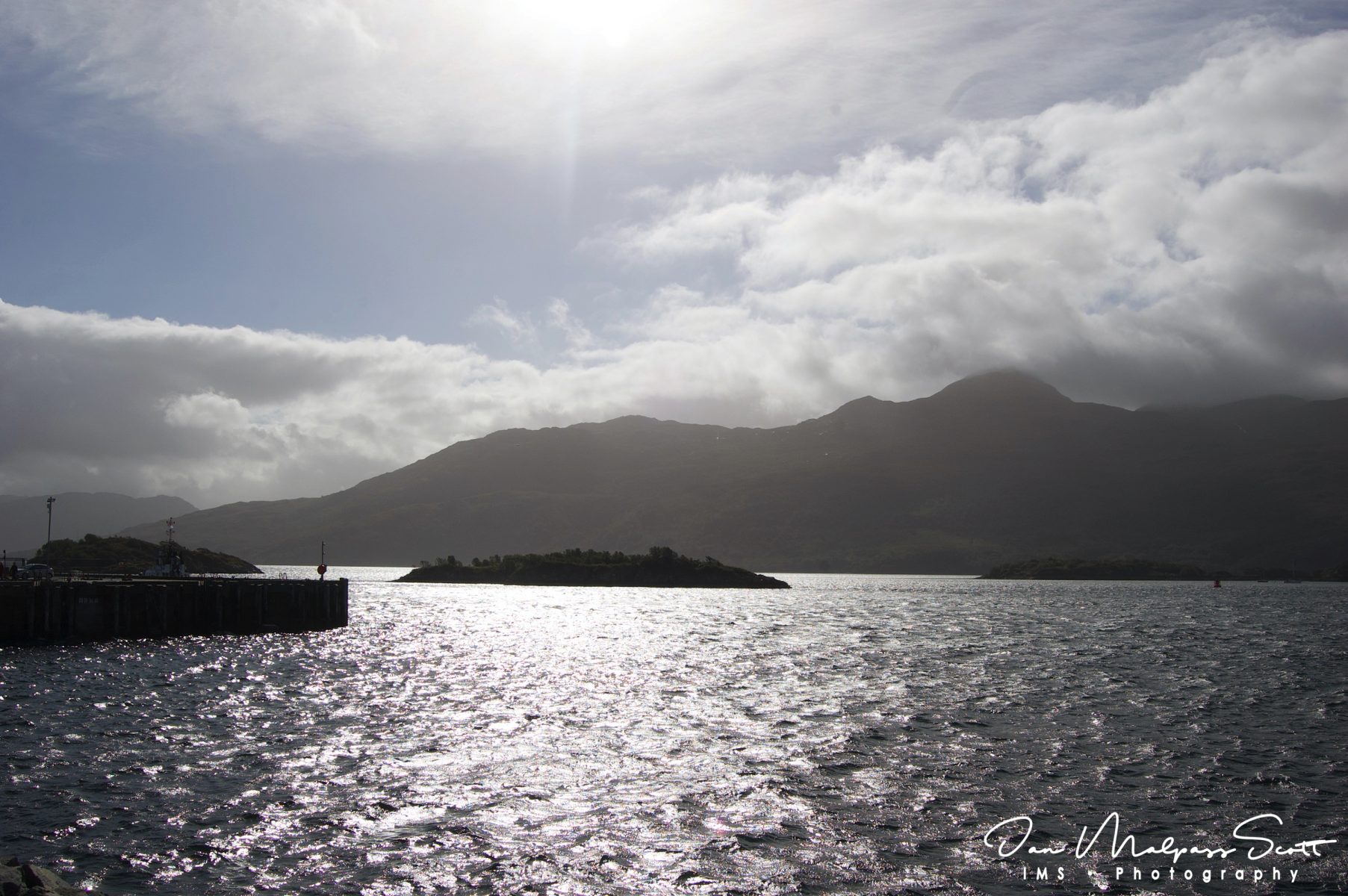The Isle of Skye viewed across Loch Alsh from the Kyle of Lachalsh, Highland
The Isle of Skye, commonly known as Skye (/skaɪ/; Scottish Gaelic: An t-Eilean Sgitheanach or Eilean a’ Cheò), is the largest and northernmost of the major islands in the Inner Hebrides of Scotland. The island’s peninsulas radiate from a mountainous centre dominated by the Cuillin, the rocky slopes of which provide some of the most dramatic mountain scenery in the country. Although it has been suggested that Sgitheanach describes a winged shape there is no definitive agreement as to the name’s origins.
The island has been occupied since the Mesolithic period, and its history includes a time of Pictish, Celtic and Norse rule and a long period of domination by Clan MacLeod and Clan Donald. The 18th century Jacobite risings led to the breaking up of the clan system and later clearances that replaced entire communities with sheep farms, some of which involved forced emigrations to distant lands. Resident numbers declined from over 20,000 in the early 19th century to just under 9,000 by the closing decade of the 20th century. Skye’s population increased by 4 per cent between 1991 and 2001. About a third of the residents were Gaelic speakers in 2001, and although their numbers are in decline, this aspect of island culture remains important.
The main industries are tourism, agriculture, fishing and forestry. Skye is part of the Highland Council local government area. The island’s largest settlement is Portree, which is also its capital, known for its picturesque harbour. There are links to various nearby islands by ferry and, since 1995, to the mainland by a road bridge. The climate is mild, wet and windy. The abundant wildlife includes the golden eagle, red deer and Atlantic salmon. The local flora are dominated by heather moor, and there are nationally important invertebrate populations on the surrounding sea bed. Skye has provided the locations for various novels and feature films and is celebrated in poetry and song.


